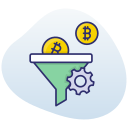
Improving Funnels with Heatmap Tools
Chosen theme: Improving Funnels with Heatmap Tools. Step inside a practical, inspiring journey where visual behavior data reveals friction, guides experiments, and unlocks smooth, high-converting funnels. Join the conversation, share your heatmap wins, and subscribe for fresh optimization stories.
See Funnel Friction Through Heatmaps
Reading Click and Scroll Patterns
Click clusters reveal desire; scroll depth exposes how far your visitors actually travel. When a critical step lives in a cold zone, conversion stalls. Compare sections with steep drop-offs to find where cognitive load spikes and momentum breaks.
Decoding Rage Clicks and Dead Zones
Rage clicks often mean elements look interactive but aren’t, creating instant frustration. Dead zones hint at weak relevance or buried value. Flag both, then align each with funnel steps to isolate which micro-moments are silently draining your completion rate.
Story: The Hidden CTA Below the Fold
A SaaS onboarding page buried its primary CTA below the fold. Heatmaps showed attention evaporating right above it. Moving the CTA higher, clarifying value, and reducing visual noise increased step completions by 18% within two testing cycles.



Align Mobile and Desktop Heatmap Insights
If primary actions sit outside comfortable thumb zones, mobile users hesitate. Relocate critical buttons to lower, reachable areas. Heatmaps should reveal tighter tap clusters and fewer mis-taps, especially for one-handed users navigating crucial steps under time pressure.
Align Mobile and Desktop Heatmap Insights
Mobile visitors often scroll more but skim aggressively. Desktop users may linger and compare details. Segment scroll maps by breakpoint to find the precise fold where attention fades, then reorder key messages so value lands before curiosity starts dropping.
Align Mobile and Desktop Heatmap Insights
Heatmaps summarize patterns; replays explain why. When you spot hot confusion zones, open sessions to watch hesitation, cursor loops, or zoom gestures. Document observed behaviors alongside timestamps to craft targeted fixes rather than broad, speculative design overhauls.
Overlay click intensity on steps with the steepest exits. If a hotspot lives on non-essential elements during checkout, it’s likely a distraction. Shift attention to core actions, then measure whether exit rate and time to complete both improve meaningfully.
Merge Heatmaps with Analytics for Causal Clarity
Content and Layout Tweaks That Convert
When attention scatters, tighten hierarchy: one dominant headline, a supportive subhead, and a strong, singular CTA. Heatmaps should evolve from chaotic speckles to purposeful clusters, signaling comprehension and smoother flow toward the next funnel milestone.
Heatmaps often show gaze clustering around CTAs and short value statements. Slide testimonials, security badges, or social proof near those clusters. Done right, skepticism softens at the exact decision point, nudging more users comfortably into the next step.
If visitors over-click secondary navigation during key steps, they’re probably lost. Trim competing links and reinforce the primary path. Expect cleaner click trails and steadier scroll depth as users stop detouring and start committing to the conversion journey.
Operationalize Heatmap-Driven Optimization
Run brief weekly reviews to capture fresh issues while traffic patterns are current. Bundle validated ideas into monthly sprints. This steady rhythm compounds improvements, ensuring you act on real behavior rather than letting insights fade into archives.
Operationalize Heatmap-Driven Optimization
Invite product, design, support, and data to the same heatmap review. Assign owners to each issue and document decisions. Shared visibility prevents duplicate work and turns observations into accountable, time-bound actions that genuinely advance your funnel’s performance.


